15 Best Pet Snakes For Beginners
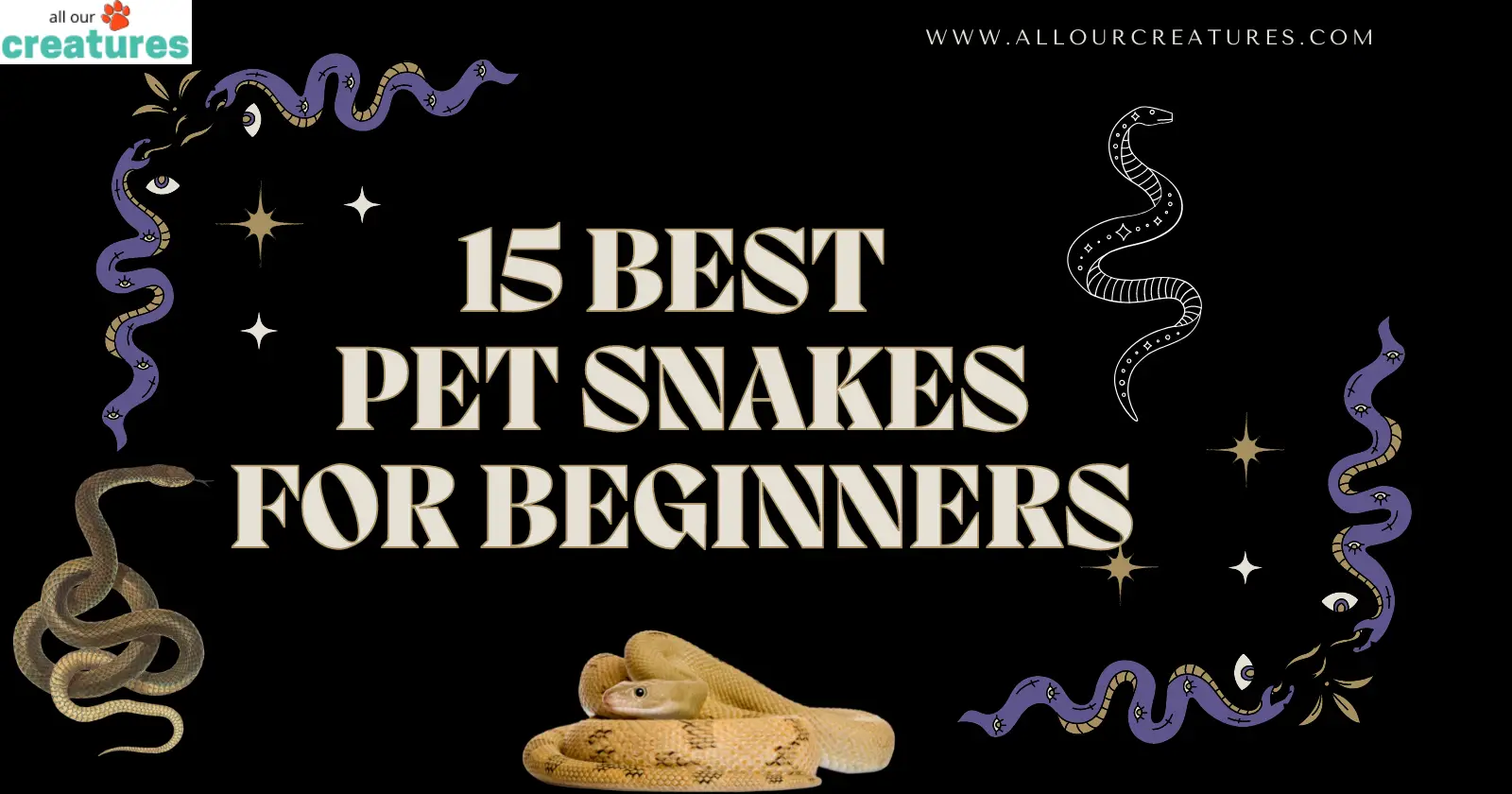
Have you decided to get pet snakes? Do you know that pet snakes have unique requirements and come with greater risk? Having pet snakes is quite different from housing other pets from livestock. Are you still considering petting a snake? Keep reading the article to discover the 15 best pet snakes for beginners.

Contents
Table of Contents
How Do I Handle My Pet Snake?
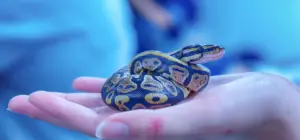
Do you need clarification about how to acclimate your pet snake to your presence? Look before you leap because snakes are not used to human touch and presence when they are young. You must be patient and train your pet for it with great care. Make sure to wash your hands before interacting with them; they can confuse the scent with food.
Initially, put your hand in the cage for two to three minutes to look for the pet snake’s reaction. If the snake is suspicious, it’ll ignore you. However, snakes are known to have a strong sense of smell. So, as time passes, they’ll start investigating your hand and exploring you. But, never surprise a snake; approach it from the side or straight from the front.
What Should You Know Before Having A Pet Snake?
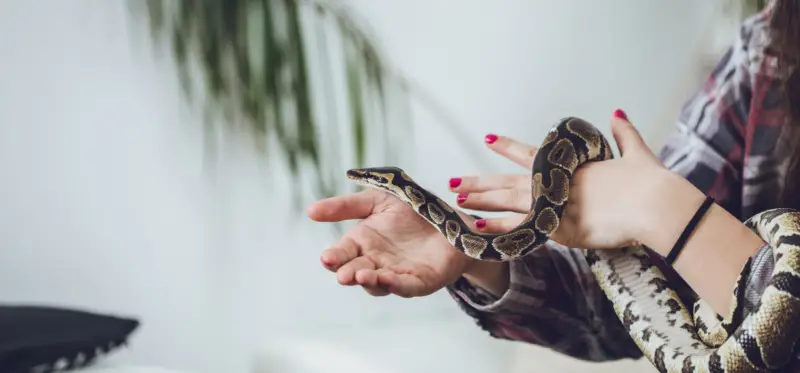
Provision of Thermal Gradient
Each snake requires a specific temperature, depending on its breed and origin. Some prefer a moist environment, while some pet snakes need a warm climate. Therefore, before laying your hands on a pet snake, you should know the ideal temperature to ensure a healthy snake.
Snakes are Escape Artists

Snakes are famous for their ways of escaping. Therefore, it would be best to ensure the enclosure they are kept in has no openings or ways to escape. Snakes are adamant about looking for a hole to escape and can squeeze through the smallest holes.
How to Know If Pet Snake Is Shedding its Skin

Shedding of skin is normal in snakes. There’s nothing to worry about. You should, however, know when it is about to shed its skin to ease the process by supporting it. Snakes begin to live in their shed or water when it is shedding. It also loses its appetite and may avoid handling too. Shedding has 3 phases that we’ve discussed below.
Initial Phase
The skin of your pet snake may begin to turn dull. It appears hazier. Often, it goes unnoticed as some snakes only undergo minor dulling of their skin. It is because each snake has its response and system. Even two snakes of the same species may show differences in shedding.
Blue Phase
This phase is known as the blue phase because your pet snake’s eyes often turn blue when shedding its skin. It is the time when the snake may be cheesed off and aggressive. The main reason for aggression may be their blurry vision during the phase. Handling them during the blue phase is not recommended as it may aggravate their irritation.
Final Phase
The blue phase ends between two to four days. After that, you may notice the eyes and skin returning to a normal state. Now the old skin will begin to slough off in a few days. You’ll start to notice frequent rubbings against the glass or water containers to begin shedding. Finally, you’ll see the new skin gleaming underneath as the skin starts peeling off.
Brief Review for Best Pet Snakes for Beginners
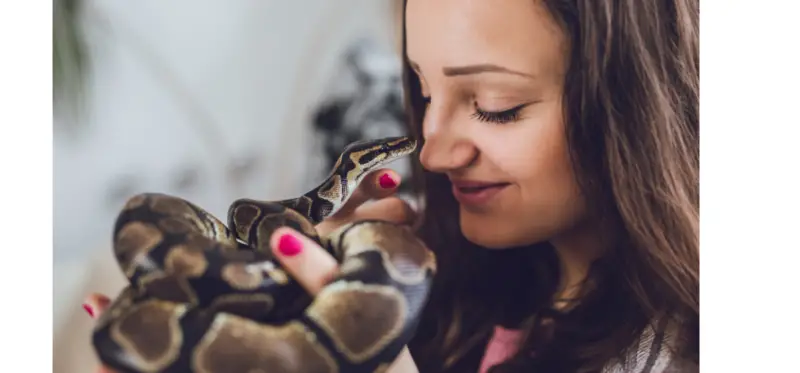
1. Corn Snake
Corn snakes have earned the spot of being the best pet snakes. These are gentle and harmless. Moreover, their ease of handling is also spot on. However, their life expectancy is approximately 25 years, so long-term commitment is required. These are red-brown to orange in color with red-black blotches.
Learn more about this pet snake in this video:
2. Rat Snake

Rat snakes are popular as pets because they are non-venomous. Plus, they are never suspicious of humans and love to be around them. Rat snakes rarely bite, and as they’re non-venomous, the nip won’t be dangerous for your health. However, when these pet snakes are young, they remain shy and won’t play or move much in your presence.
3. Hognose Snake

Hognose snakes are calm and docile, as pet snakes require warm temperatures to thrive. These are not found aggressive and are easy to maintain once their routine is set. They dwell on thawed frozen rodents and need the substrate to burrow in. Hognose snakes do not get sick often, so visits to vets are minimal. Male snakes tend to be smaller than females.
4. Pueblan Milk Snake
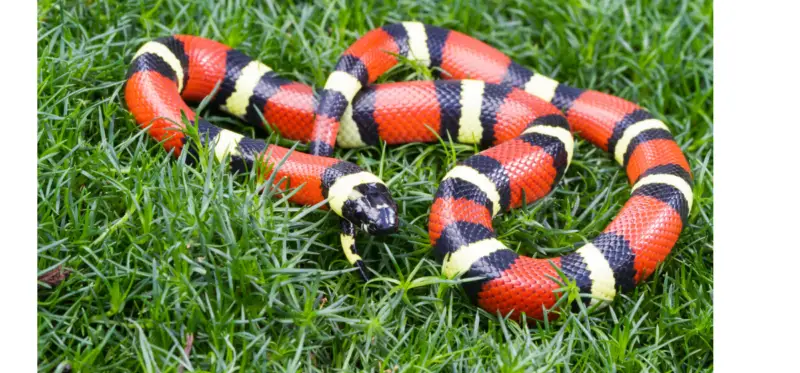
Pueblan milk snakes are known to be non-venomous pet snakes with vibrant colors. These snakes live up to 20 years, so you should make a sure long-term commitment to them. Pueblan milk snakes also dwell on frozen, thawed mice and rodents. Therefore, it is better to have some prior experience housing snakes as pets for these pet snakes.
5. African House Snakes
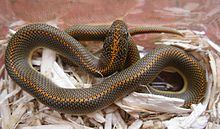
African house snakes are small, dark brown pet snakes with white or cream stripes. They are known to live between 15 to 20 years, so you get to build a good bond and trust between the two. Feeding them with defrosted mice is ideal since they are young. The reason to serve live food is that it can cause damage to them.
6. California Kingsnake
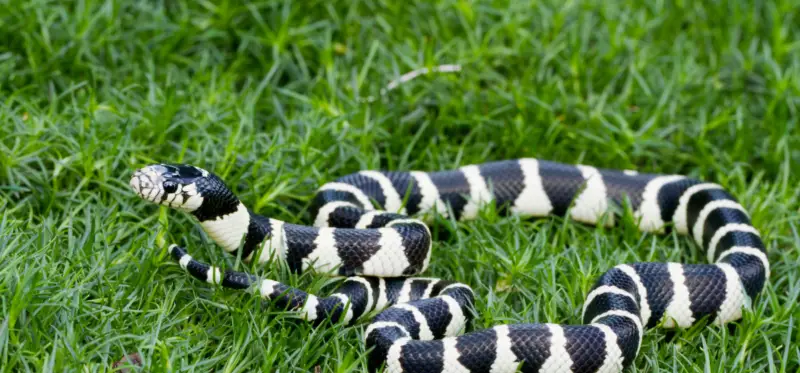
California Kingsnakes are famous for their escape tactics and are also known as escape artists. These pet snakes can grow up to 6 feet long, but due to their slender body, they look relatively small. California Kingsnakes are known to live for up to 20 years and thrive on mice and rodents. However, these pet snakes are shy, docile, and coil and hide when stressed.
7. Garter Snake

Garter snakes are non-venomous snakes usually found in the wild. But these snakes can be tamed as a pet with gentle handling as they possess docile nature. These pet snakes enjoy woodland, marshes, and meadows; therefore, a water source in their tank is ideal. Their diet is different as they prefer to eat worms and fish apart from mice and rodents.
8. Rosy Boa
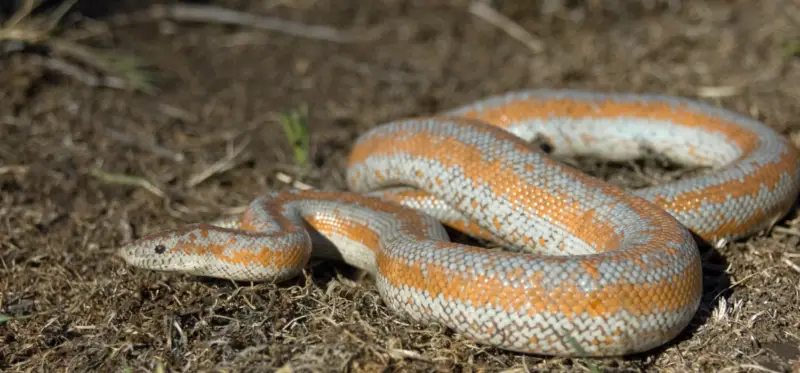
Rosy boas are known to have a calm and slow-moving nature. They do not bite usually; if they do, it is an accidental nip that is not dangerous. However, they have a strong drive toward prey and tend to eat anything on their hands leading to obesity. If properly taken care of, Rosy boas are known to live for 30 years as your beloved pet snake.
9. Ball Python
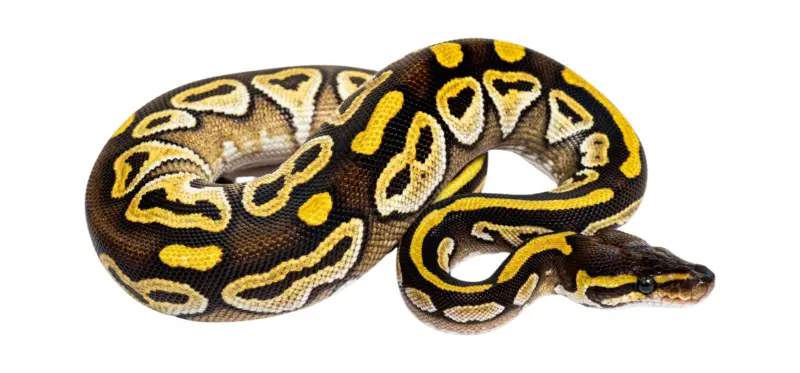
These pet snakes are not dangerous at all. These are docile, calm, and love to be handled once trust is developed. They tend to eat freshly killed prey or thawed meat. Ball pythons may go off their diet in colder months which is not something to worry about. They love to be in stealth mode as much as possible.
10. Woma Python
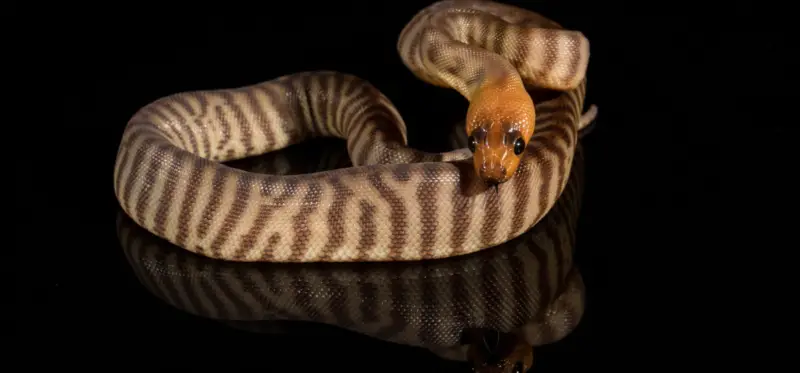
Woma pythons are docile pet snakes that love to be handled and socialized when tamed. They can last more than a marriage that is approximately 20 years of age. Therefore, long-term commitment is required, and you must be vigilant throughout their care. They thrive on ducklings, mice, and chicks. Occasional appetite for reptiles is also appreciated.
11. Kenyan Sand Boa
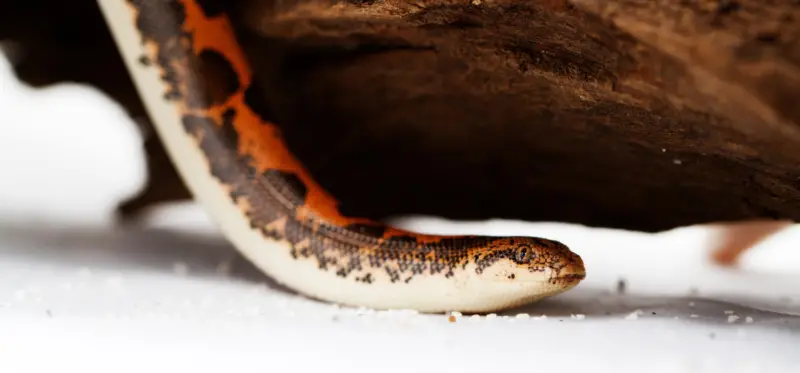
Kenyan Sand Boas are burrowing pet snakes. They require enough substrate to dig in. they have docile nature, so taking care of them is no rocket science. They thrive for small mice as a living source. Watch out before you handle them, as handling them soon after meals may cause regurgitation. Feed them before bed to allow the digestion of food.
12. Rainbow Boa
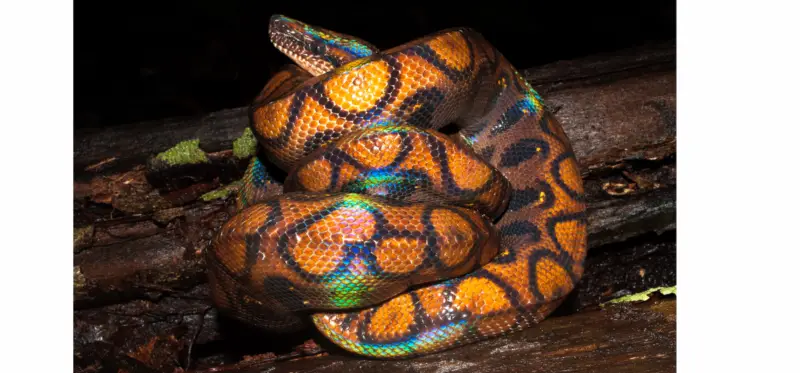
Rainbow boas have lovely and vibrant colors that everyone falls for. However, it is shy when young and can nip, so it is not recommended for beginners. In addition, they belong to tropical areas and need high heat and humidity to stay active in their habitat. Rainbow boas can grow up to 9 feet long in 20 years if conditions allow.
13. Children’s Python
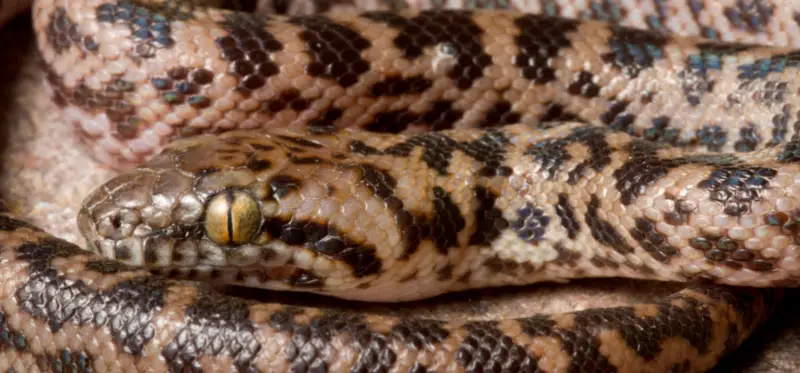
Children’s python is a pet snake known to stay even smaller than ball pythons. But they are more foodies; we mean that they hardly stop eating. Like corn snakes, these snakes also have slender body that grows up to 4 feet long. They dwell on mice and rats and have a life expectancy of up to 30 years.
14. Rough Green Snake
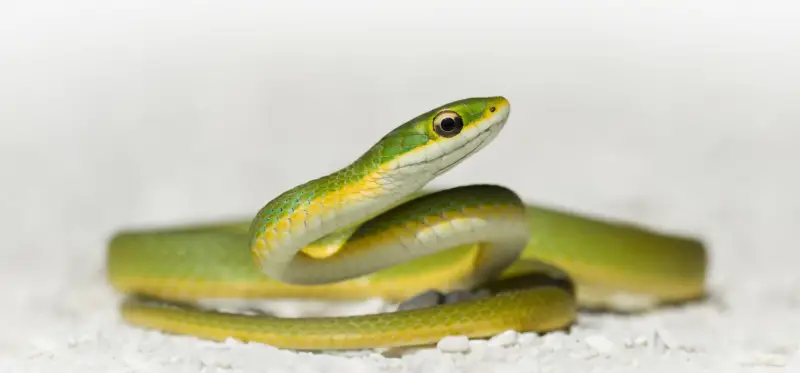
Rough green snakes are also non-venomous snakes that can be housed as pet snakes. They come in green emerald skin that helps them camouflage in trees and vegetation. These are known as shy creatures, which require quiet habitats to thrive in. Noisier surroundings and handling can put the pet snake in distress. They eat insects and worms.
15. Dekay’s Brown Snake
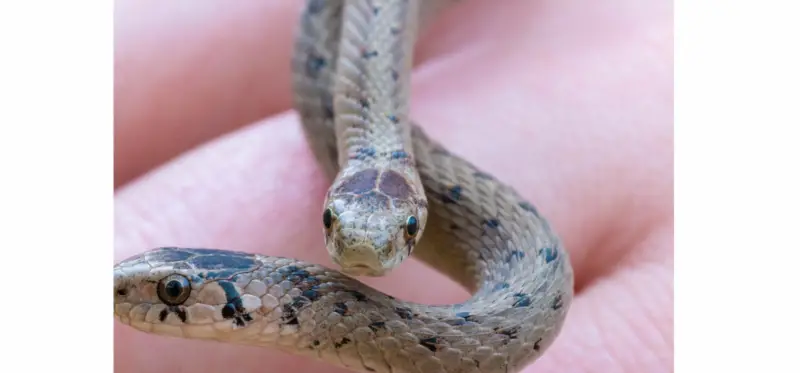
Dekay’s brown snake’s total length is approximately 10 to 13 inches at maximum. These pet snakes are non-venomous, small, and thin, with slender bodies. Dekay’s brown snakes are usually found under leaf litter, rocks, and logs. When mishandled, they may attack with a closed mouth as a bluff to scare you or release a foul smell from their tail glands to get released.
Conclusion
Choosing the first right pet snake may be a hard nut to crack. A pet snake that is non-venomous and easy to handle while not breaking the bank is ideal. Pet snakes that are easy to operate may help you gain confidence to house other snakes later. Purchasing a snake from a professional breeder is a wise decision.
It would help if you always considered multiple factors, like whether you have kids, how much money you can keep for your pet snake, and how other family members would react in front of your pet snake. However, as long as you have done the proper planning and given thought to it, you can always choose the best pet snake suiting your circumstances. Visit allourcreatures to learn more.


